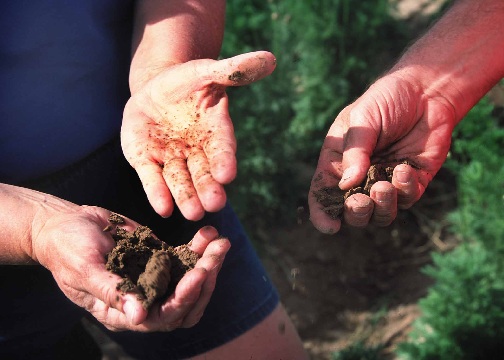Competency Area 1: Basic Soil Properties
PO 4. Understand soil consistency states and the consistency limits.
A soil is in the liquid state when it acts as a viscous liquid when jarred. A soil is in the plastic state when it can be molded in different shapes. A soil is friable when moist soil crumbles into aggregates when crushed with only light pressure. A soil is loose when it has no consistency at all, typical of dry, structureless sand. A soil is hard when it can only be crushed with difficulty between crumb and forefinger, typical of dry, structureless clay soils. The liquid limit is the limit between the plastic and liquid state. The plastic limit is the limit between the friable and plastic state.
To assess conditions for tillage and traffic, perform a "ball test" by grabbing a fistful of field soil in your hand and mold it – if you can form a ball the soil is in the plastic state and highly sensitive to soil compaction by traffic and tillage. In contrast, if the ball breaks into smaller pieces, the soil is in the friable state and resists compaction and can be tilled.

"Wet ball" test method
Photo courtesy of NRCS
Quick Links
- Competency Area 1: Basic soil properties
- Competency Area 2: Soil hydrology AEM
- Competency Area 3: Drainage and irrigation AEM
- Competency Area 4: Soil health and compaction
- Competency Area 5: Soil conservation AEM
- Competency Area 6: Watershed hydrology AEM
- Competency Area 7: Non-point source pollution AEM
- Competency Area 8: Concentrated source pollution AEM
- Competency Area 9: Conservation planning AEM
